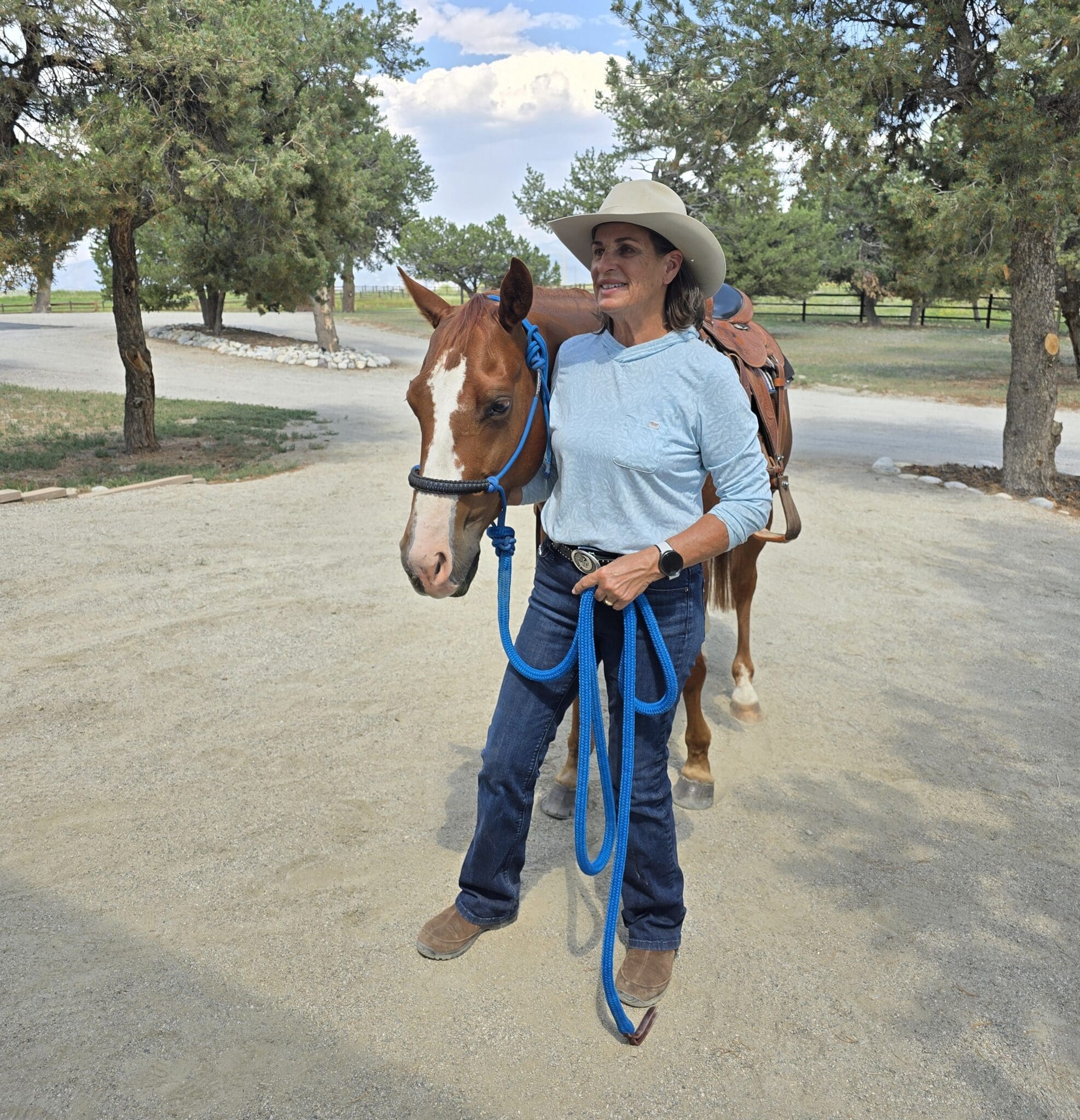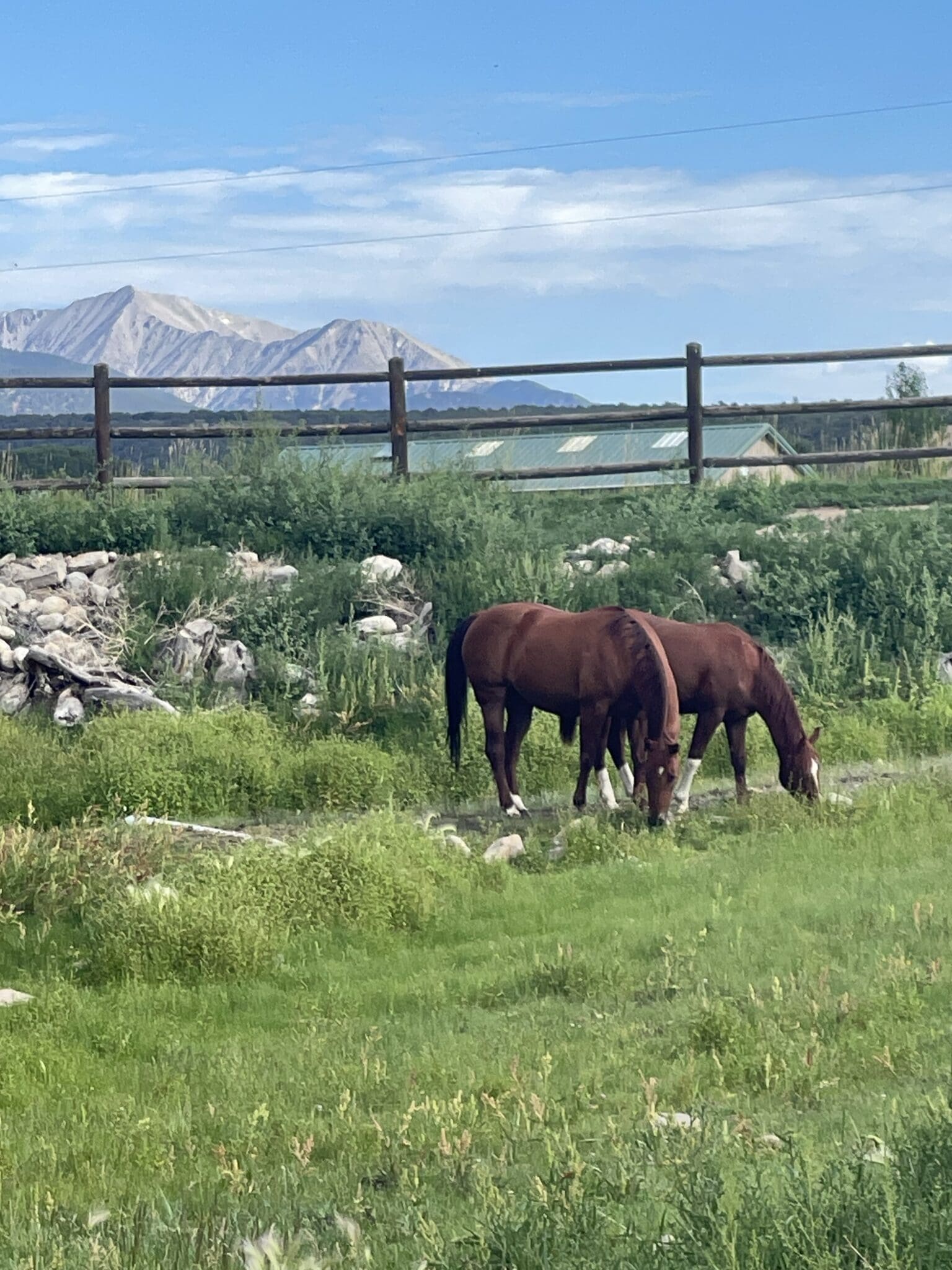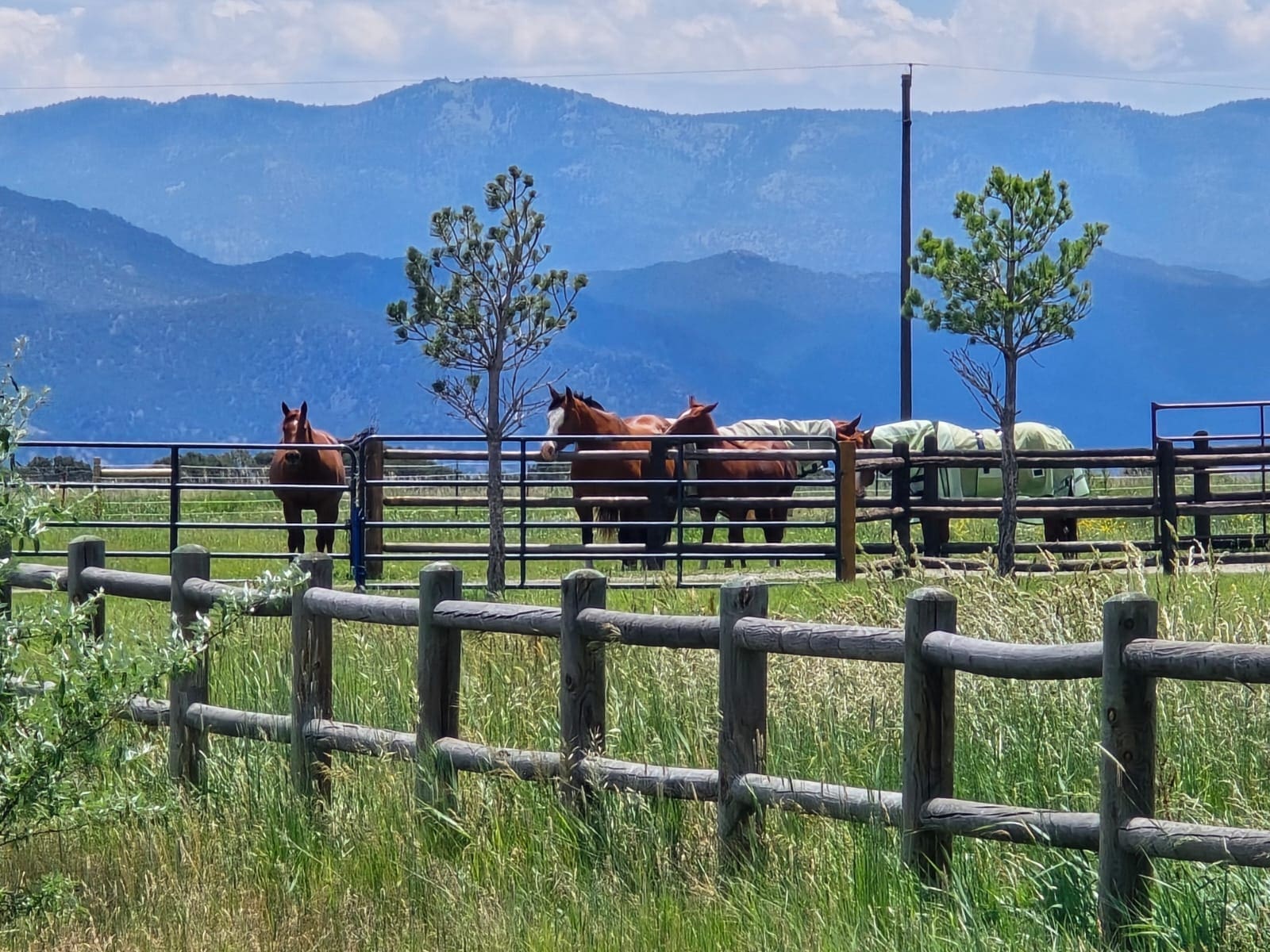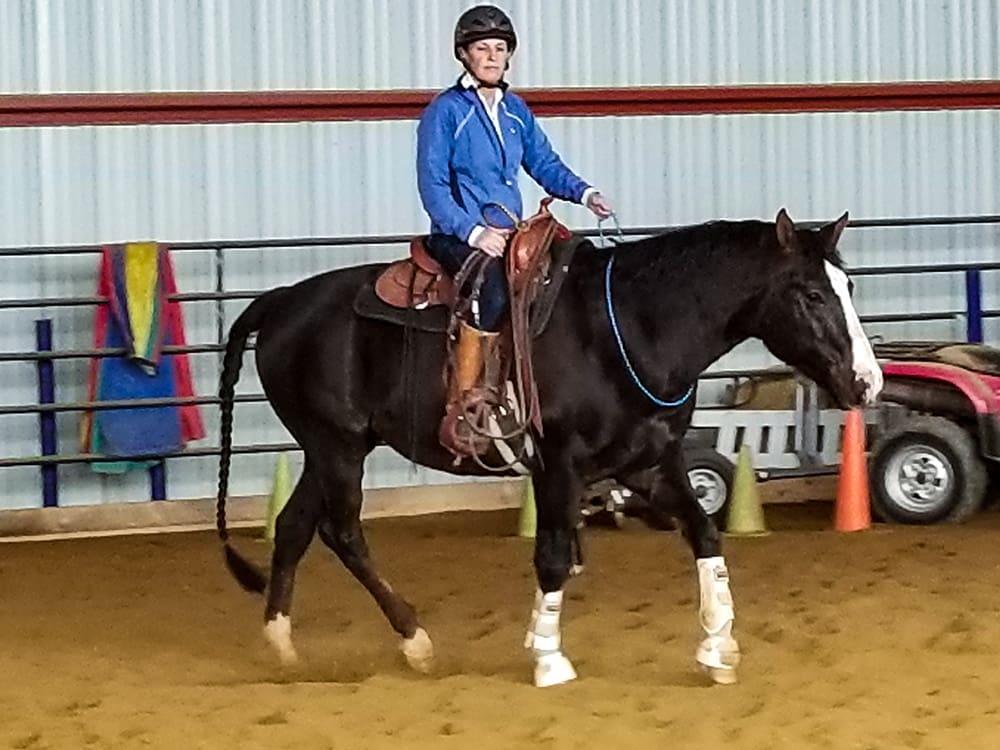Using The Goodnight Bitting System
The self-correcting bitting system I use is often called an elbow pull and it is a long harness leather cord with snaps on each end. To use the bitting tool, you place the middle of the cord over the horse’s poll and then run each end through the rings of the bit, between the horse’s legs and up to the saddle. Adjust it so that when the horse is standing square and relaxed, there is no pressure on the bit. The pressure will come as the horse walks or trots; his elbow will cause a pull on that side of his mouth.
It is a self-correcting tool– meaning that when the horse does the right thing (brings his nose down and in), the pressure goes away. It teaches the horse to drop his head, bring his nose in and round his back when he feels pressure on the bit. Since the horse is coming off of the bit pressure, he is required to hold himself in the frame rather than have something to lean against like with side reins. This requires the horse to bring his hind-end up underneath him and lift his back in order to hold himself in the frame while keeping slack in the reins.
I like this training tool much better than other bit-training techniques because it gives an alternating pull on the bit, not pulling on both sides of the bit at the same time, so it keeps the horse very soft and relaxed in the neck and jaw. Also, you can mimic the action of the bitting system from the saddle, by using alternating sponge squeezes in time with the horse’s front legs. Finally, I like this system because it teaches the horse to give to the slightest rein pressure and to seek out the slack in the rein.
I think is very important is to teach the horse to seek out the slack in the rein. From day one, I teach the horse that when he gives to the bit, he will find slack in the rein. Whether the horse is giving laterally (to the side) or vertically (bringing his nose into his chest) you should relax the reins as soon as the horse makes an effort. Again, this will reward the horse for his efforts (all any horse wants is less pressure on his mouth) and will teach him self-carriage.
I am not a big believer is holding a horse in a frame. I believe if you are light and responsive to your horse’s efforts, you can teach him to carry himself in whatever frame you ask of him. This may sound like a simple concept, but I have found that most riders have difficulty with the release. When a rider picks up the reins and asks the horse to give, most riders will continue to apply pressure to the reins even after the horse gives. I think this is in an effort to maintain direct contact, but it is typically done without feel. Therefore the horse gives in some small way but if he does not find a release, he does not know that he has done the right thing. The horse is searching for a way out of the pressure on his mouth. By and large, horses will gladly hold whatever frame you want if they know that in doing so, you will release the pressure on his mouth.
Again, the beauty of this system is threefold. One, the instant the horse gives the right way he gets slack. Two, the elbow-pull creates a rhythmic alternating pull, rather than a static pull on both reins (like side reins), and it is far more effective to use one rein at a time rather than two (a horse stiffens his neck and leans into it when you pull on both reins at the same time). And third, once the horse has learned to respond correctly and carry himself in a collected frame with no contact on his mouth, you can mimic this action on the reins when you are on his back.
This technique is explained thoroughly and demonstrated on my video, Bit Basics. You can also find out more about collection and many other riding skills in my Training Library, JulieGoodnight.com/Academy
–Julie Goodnight



